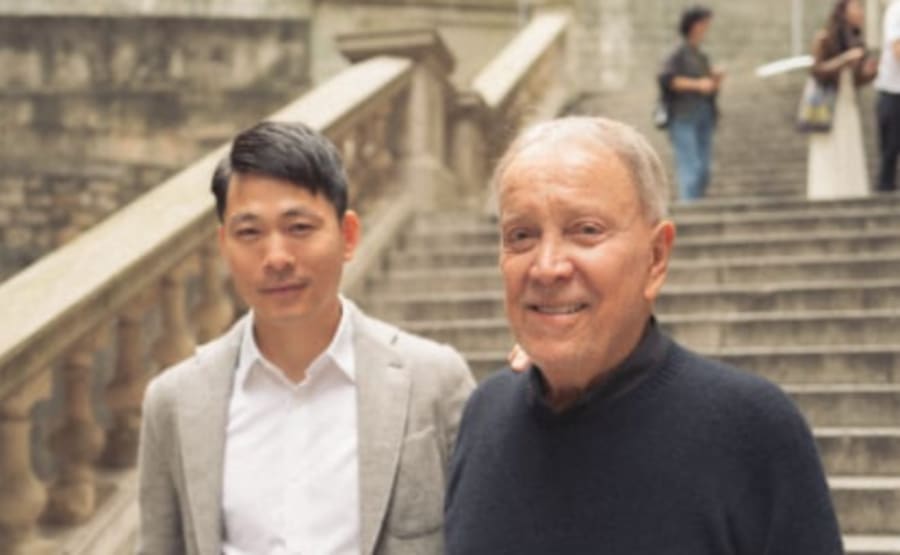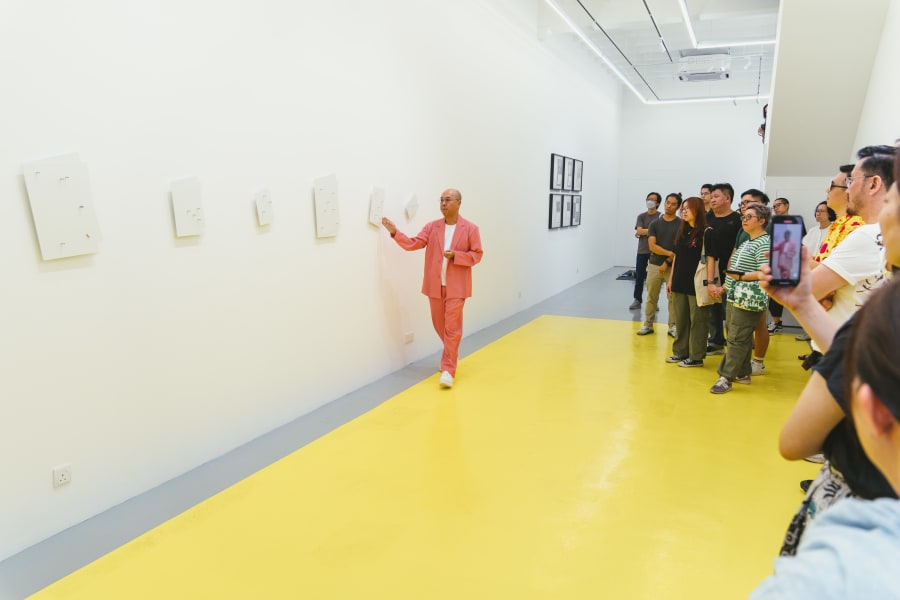‘People in the traditional art world often think digital art is just overpriced JPEGs of apes or that it is a bit of a Ponzi scheme, but that’s not true,’ says NFT collector and crypto investor Jehan Chu, who partnered with Art Basel to host the invitation-only forum ‘Collecting Digital’ at Soho House in Hong Kong last week. ‘Art is art. If there are good ideas, it doesn’t matter if it’s a sculpture, a photograph, or a JPEG. The purpose of this event is to bridge that gap in understanding.’ Dispelling stigmas associated with digital art and NFTs, the forum aimed to create a dialogue between the traditional art world and the crypto community.
Speakers at the event included star curator Hans-Ulrich Obrist and Turkish-American new-media artist Refik Anadol, whose monumental AI artworks adorn prominent buildings across the globe. Alongside other leading art world figures, pioneering NFT collectors, such as Beauty and Punk (known as ‘B’) and Art on Internet (AOI), also took to the stage. In a series of rapid-fire 30-minute conversations, the panelists delved into the nuances of creating generative and NFT art, collecting and displaying digital works, harnessing NFTs for social impact, and the future of digital art.
In his opening speech, Art Basel CEO Noah Horowitz noted that it was important to meet the Web3 community ‘on their own terms’ outside the halls of the fair. ‘We want to create platforms and places for conversation between traditional and digital collectors so that they can appreciate and educate one another,’ added Art Basel’s Chief Digital Officer Craig Hepburn.
The forum opened with a conversation between Chu and B, the famed Brazilian NFT collector who has kept her identity a secret for years by only appearing at public events in colored wigs and sunglasses. Here, however, she revealed her face for the first time and shared her digital collecting journey, which started in 2017 when she purchased some CryptoPunks – pixelated portraits of apes, aliens, and people – minted as NFTs by Larva Lab, which now sell for millions. ‘I believed that, one day, they would be more than an experiment,’ B told the audience, ‘that they could have monetary – and, hopefully, also historical – value. Now, we are reaching those milestones.’ Today, she collects traditional artwork as well as NFTs by artists including Ivona Tau and Iness Rychlik. As a Brazilian herself, B was drawn to Anadol’s recent collaboration with the indigenous Yawanawá people and purchased a data painting from his ‘Winds of Yawanawá’ NFT collection (2023).
Speaking at length about the Yawanawá project in the keynote conversation, moderated by Obrist, Anadol described travelling to the Amazon rainforest with his partner, Efsun Erkiliç. They spent time with Chief Nixiwaka Yawanawá and worked closely with two self-taught indigenous artists, Nawashahu and Mukashahu, using elements from their vibrant paintings to create a series of 1,000 data paintings sold as NFTs. Drawing on real-time weather data from their Amazonian village, the hypnotic data paintings are filled with multi-colored wave-like forms that surge, swirl, and transform. ‘People only see the surface [of NFT art] but there can be enormous social impact beyond the pixels,’ said Anadol, who is donating all funds from the sales of the NFTs back to the Yawanawá community.
Describing such AI-generated data paintings as constantly changing ‘living organisms,’ Obrist noted that, unlike conventional video works, which repeat on a loop, generative art like this can be more appealing to collectors because, when they wake up in the morning, they’ll see something different from when they went to sleep. He added that it also has huge potential for public art, which reaches audiences who may not enter museums: ’Now you can have digital artworks which change all the time; people can see something different every day on their way to work.’
Obrist spoke of the need to reinvent institutions to incorporate more digital experiments. Anadol then shared his vision for his new museum and Web3 platform DATALAND, which is dedicated to data visualization and AI arts and due to open next year. ‘We realized that, maybe, there is a world we can invent by embedding media arts into architecture in the physical world…We are speculating about a new field I’m calling generated reality,’ says the artist of creating multi-sensory, immersive environments where you can not only see but also hear, touch, and smell AI-generated art.
AOI, an anonymous NFT collector who runs a multidisciplinary art and tech agency, also spoke about new ways to display digital art. While he typically doesn’t appear in public, the young collector spoke candidly about his collecting journey and various initiatives supporting artists in the space. ‘I think the future…will be using augmented reality to create these beautifully designed architectural masterpieces that anyone can experience by putting on a headset…Or entering an immersive room and experiencing artwork that takes over your whole body,’ he said, explaining that he has created a metaverse museum inspired by Naoshima Island in Japan.
Museum representatives also shared their experiences in the field, describing how they built NFT task forces to get to grips with collecting such a complex medium. Celia Yang, Head of Director’s Strategic Initiatives at Los Angeles County Museum of Art (LACMA), spoke about the museum’s collaborations with celebrities such as Paris Hilton with whom they established a fund to collect female digital artists. ‘It was such an important thing to do because there were so many male figureheads in the space and we wanted to create a platform for female voices as well,’ says Yang. Last year, LACMA also received a major donation from famed NFT collector Cozomo de’ Medici, which was the largest collection of artworks minted on blockchain to be acquired by an American art museum. Aside from donations, Yang said they are actively collecting digital art and helping to educate the art world through informative blog posts.
In another panel, Hong Kong-based collector Alan Lau said the forum’s openness was refreshing. ‘A session like this would be unthinkable in the traditional art world, where few people share their collections. It’s the complete opposite with NFTs.’ Asked what advice he would give to newcomers to the field, he replied: ‘Get a sense of the community before you buy. It is easy, accessible, and democratic.’
The word community cropped up in every conversation at the forum. ‘You hear that word all the time when it comes to blockchain or digital art. But it’s not just a word, it’s attached to real experiences,’ says Anadol. ‘The traditional art world is still very slow and skeptical…I’m grateful that there is another world where we can create, think, and share more together.’
Payal Uttam is an independent writer and editor who divides her time between Hong Kong and Singapore. She contributes to a range of publications including Artsy, The Art Newspaper, South China Morning Post, and The Wall Street Journal.
Published on April 8, 2024.
Caption for top image: Detail of a work by Jacqueline Humphries, presented by Greene Naftali at Art Basel Hong Kong 2024.


